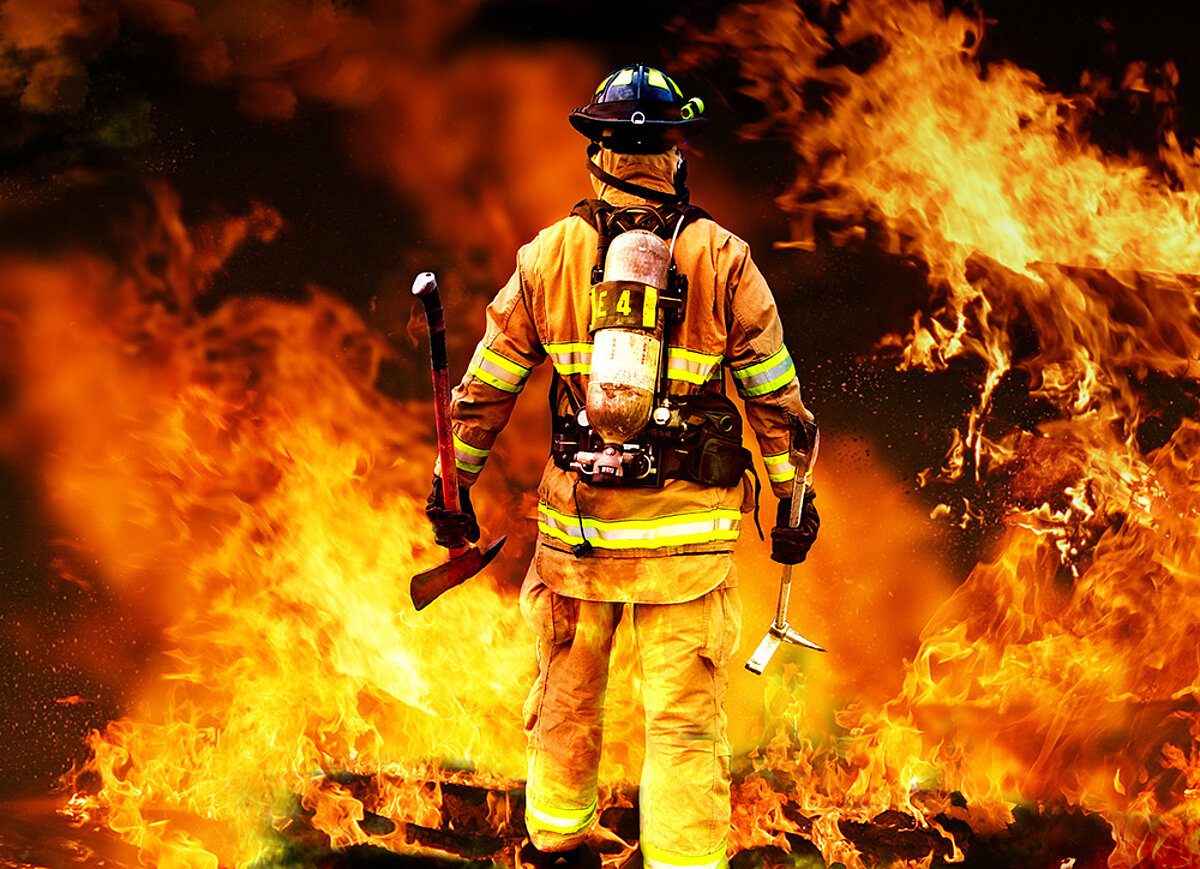Fire simulation & smoke extraction

In the eye of the inferno
Building fire simulation & smoke extraction save lives
A major fire at a well-known amusement park in Baden-Württemberg made headlines last weekend (May 26, 2018). The fire department brought the fire under control on Saturday evening, but the extinguishing work lasted well into Sunday. Fortunately, there were no serious injuries in this horror scenario. Seven firefighters had to be treated briefly due to the smoke and exhaustion.
Smoke, along with flames, is one of the main sources of danger.
According to the Abus company, Germany has about 400 fire deaths every year. 95% of the dead do not fall victim to the fire itself, but to the fire gases. 6,000 people also suffer permanent damage.
In order to minimize such incidents, there are not only various fire protection regulations but also well thought-out systems for smoke extraction. Merkle & Partner has developed a simulation toolbox that allows fast and efficient investigations of smoke extraction in buildings.
Smoke extraction simulation using the example of an underground car park
Problem
A vehicle fire in an underground garage quickly becomes a death trap
Underground garages are usually spacious with floor areas of several thousand square meters, but usually have low ceilings. When a vehicle catches fire, very large quantities of smoke and toxic gases are produced over a long period of time. Experience shows that a vehicle fire produces about 20m³ of smoke per second. This means that with a ceiling height of 2.5m, a floor area of 8m² is completely filled with smoke every second. After one minute it is almost 500m². In reality, these values are much more dramatic because of the heat.
Due to the low ceiling height, the smoke produced can only spread in the transverse direction and thus fills the space of the underground garage very quickly. However, normal ventilation is not sufficient to remove the smoke. Technical measures for fast and efficient smoke removal are ceiling fans. By switching them on in the event of a fire, this measure transports the smoke in the direction of the extraction system.
However, this raises the question:
How many ceiling fans do I need for my underground garage and where do I position them to ensure optimal protection?
A simulation can help to solve this task! The simulation kit we have developed over more than 25 underground parking projects provides very efficient answers to these questions!
Solution-oriented approach with our simulation kit
Our simulation kit provides simplified but quick statements about the smoke filling of the room and its escape routes.
The reduced model, including the geometry and the ceiling fans, is simplified as far as possible and the highly complex combustion processes during a vehicle fire become simply a source of smoke and energy. From a construction plan, a three-dimensional model with ventilation and exhaust is built. The jet fans as well as the virtual vehicle fire are positioned.
The fire scenario must also be defined. Here is an example:
from t = 0 the first vehicle is on fire
from t = 5min a second adjacent vehicle is burning
from t = 15min the fire is extinguished
up to t =25min no smoke only evacuation
[smartslider3 slider=4]
The difference is obvious. Without active smoke extraction, the underground garage very quickly fills completely with smoke. Escape and rescue routes are no longer recognizable.
Have we aroused your interest?
If you have similar tasks, please do not hesitate to contact us.
Phone: +49 (0)7321 9343-0
E-Mail: info@merkle-partner.de
